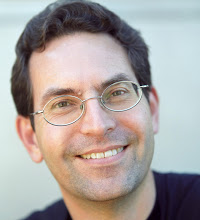 People love to talk about "moonshots" in health (e.g., Joe Biden, GE). I'm not exactly sure why that is a good goal. The actual moonshot took thousands of people many years and tens of billions, all to send a few people far away for a short period and never again. It may or may not have produced otherwise useful technological advances (Tang, anyone?). Sounds a lot like health care now, actually. I suggest a different goal: let's make health care "Five by Five." Five by five is a communications term to quantify the signal-to-noise ratio. It means the best possible readability with the best possible signal strength. I.e., the signal is loud and clear. By contrast, "one by one" would essentially mean "I can't figure out what you're telling me but that's OK, because I can't really hear you"...
People love to talk about "moonshots" in health (e.g., Joe Biden, GE). I'm not exactly sure why that is a good goal. The actual moonshot took thousands of people many years and tens of billions, all to send a few people far away for a short period and never again. It may or may not have produced otherwise useful technological advances (Tang, anyone?). Sounds a lot like health care now, actually. I suggest a different goal: let's make health care "Five by Five." Five by five is a communications term to quantify the signal-to-noise ratio. It means the best possible readability with the best possible signal strength. I.e., the signal is loud and clear. By contrast, "one by one" would essentially mean "I can't figure out what you're telling me but that's OK, because I can't really hear you"...
Latest News
Open Education Is About Improving Lives, Not Taking Tests
 While recently reading The Innovator's Mindset: Empower Learning, Unleash Talent and Lead, by George Couros, I was struck by the parallels between the author's thinking and that of Jim Whitehurst in The Open Organization: Igniting Passion and Performance. "Sometimes it scares me to think that we have taken the most human profession, teaching, and have reduced it to simply letters and numbers," Couros says early in the book. "We place such an emphasis on these scores, because of political mandates and the way teachers and schools are evaluated today, that it seems we've forgotten why our profession exists: to change—improve—lives." In other words education has lost it's "Why?"—and that is central to its mission...
While recently reading The Innovator's Mindset: Empower Learning, Unleash Talent and Lead, by George Couros, I was struck by the parallels between the author's thinking and that of Jim Whitehurst in The Open Organization: Igniting Passion and Performance. "Sometimes it scares me to think that we have taken the most human profession, teaching, and have reduced it to simply letters and numbers," Couros says early in the book. "We place such an emphasis on these scores, because of political mandates and the way teachers and schools are evaluated today, that it seems we've forgotten why our profession exists: to change—improve—lives." In other words education has lost it's "Why?"—and that is central to its mission...
- Login to post comments
Health Care Should Be Five By Five
- Login to post comments
Top Open Innovations in 3D Printing
 Open source continues to drive rapid innovation in the 3D printing industry. This makes sense if you stop and think about it—a 3D printer exists to make other things. Combining that philosophy with free software and open source hardware helps other people participate in improving the objects that it makes, and in making the printers faster, smarter, and cleaner. Here are a few of my favorite open source 3D printing innovations from 2016...
Open source continues to drive rapid innovation in the 3D printing industry. This makes sense if you stop and think about it—a 3D printer exists to make other things. Combining that philosophy with free software and open source hardware helps other people participate in improving the objects that it makes, and in making the printers faster, smarter, and cleaner. Here are a few of my favorite open source 3D printing innovations from 2016...
- Login to post comments
Why the Operating System Matters Even More in 2017
 Operating systems don't quite date back to the beginning of computing, but they go back far enough. Mainframe customers wrote the first ones in the late 1950s, with operating systems that we'd more clearly recognize as such today—including OS/360 from IBM and Unix from Bell Labs—following over the next couple of decades. An operating system performs a wide variety of useful functions in a system, but it's helpful to think of those as falling into three general categories. First, the operating system sits on top of a physical system and talks to the hardware. This insulates application software from many hardware implementation details...
Operating systems don't quite date back to the beginning of computing, but they go back far enough. Mainframe customers wrote the first ones in the late 1950s, with operating systems that we'd more clearly recognize as such today—including OS/360 from IBM and Unix from Bell Labs—following over the next couple of decades. An operating system performs a wide variety of useful functions in a system, but it's helpful to think of those as falling into three general categories. First, the operating system sits on top of a physical system and talks to the hardware. This insulates application software from many hardware implementation details...
- Login to post comments
7 Cool Little Open Source Projects That Stood Out in 2016
 In the early days of the open source movement, a lot of the attention was on operating systems, and later on large content management systems. These days, containers are mentioned regularly even in mainstream news outlets. The big tech stories are great, but they miss the other great activity in the niches of the open source space. I've rounded up seven interesting lesser-known projects from the past year. You can see more articles about projects like this in my Nooks and Crannies column...
In the early days of the open source movement, a lot of the attention was on operating systems, and later on large content management systems. These days, containers are mentioned regularly even in mainstream news outlets. The big tech stories are great, but they miss the other great activity in the niches of the open source space. I've rounded up seven interesting lesser-known projects from the past year. You can see more articles about projects like this in my Nooks and Crannies column...
- Login to post comments
4 Open Source Peer-to-Peer Marketplaces
 Peer-to-peer marketplaces have been booming, and PwC predicts the market will go from $15 billion in 2013 to $355 billion in 2025. This means that a lot of marketplaces will be developed in the next years. However, until recently, you didn't have many choices if you wanted to create a marketplace like Airbnb, Blablacar, or Drivy. You either developed an expensive proprietary solution like the incumbents do, or you used a hardly customizable SaaS solution, and that approach isn't scalable...
Peer-to-peer marketplaces have been booming, and PwC predicts the market will go from $15 billion in 2013 to $355 billion in 2025. This means that a lot of marketplaces will be developed in the next years. However, until recently, you didn't have many choices if you wanted to create a marketplace like Airbnb, Blablacar, or Drivy. You either developed an expensive proprietary solution like the incumbents do, or you used a hardly customizable SaaS solution, and that approach isn't scalable...
- Login to post comments
Why Your Teams May Be Failing at the Collaboration Game
 When we think about skills needed to build open structures and establish open mindsets, collaboration jumps to mind immediately. In order to collaborate effectively, communication—or rather, clear communication—is imperative to making it all work. Communication can be defined as a transfer of information from one space or person to another—but it can look like dialogue, conflict resolution, listening skills, or even a knowledge commons. In open organizations, we look for timely transfers of information to all members so that they may do their jobs effectively and efficiently...
When we think about skills needed to build open structures and establish open mindsets, collaboration jumps to mind immediately. In order to collaborate effectively, communication—or rather, clear communication—is imperative to making it all work. Communication can be defined as a transfer of information from one space or person to another—but it can look like dialogue, conflict resolution, listening skills, or even a knowledge commons. In open organizations, we look for timely transfers of information to all members so that they may do their jobs effectively and efficiently...
- Login to post comments
Halamka's Dispatch from Israel
 This week Massachusetts Governor Charlie Baker led a trip of clinicians, industry leaders, government officials, academics, and entrepreneurs to visit Israel (not at taxpayer expense) on a mission to establish Massachusetts as an incubator for the US growth of Israeli companies. I represented the healthcare IT innovation work we’re doing at Beth Israel Deaconess and Harvard Medical School. Israel is a remarkable place. With 8 million people in a nation the size of New Jersey situated in an unstable part of the world, Israel has no choice but to be a start up nation, creating companies that generate economic impact world wide...
This week Massachusetts Governor Charlie Baker led a trip of clinicians, industry leaders, government officials, academics, and entrepreneurs to visit Israel (not at taxpayer expense) on a mission to establish Massachusetts as an incubator for the US growth of Israeli companies. I represented the healthcare IT innovation work we’re doing at Beth Israel Deaconess and Harvard Medical School. Israel is a remarkable place. With 8 million people in a nation the size of New Jersey situated in an unstable part of the world, Israel has no choice but to be a start up nation, creating companies that generate economic impact world wide...
- Login to post comments
Growing the Duke University eNable Chapter
 We started the Duke University eNable chapter with the simple mission of providing amputees in the Durham area of North Carolina with alternative prostheses, free of cost. Our chapter is a completely student-run organization that aims to connect amputees with 3D printed prosthetic devices. We are partnered with the Enable Community Foundation (ECF), a non-profit prosthetics organization that works with prosthetists to design and fit 3D printed prosthetic devices on amputees who are in underserved communities. As an official ECF University Chapter, we represent the organization in recipient outreach, and utilize their open sourced designs for prosthetic devices...
We started the Duke University eNable chapter with the simple mission of providing amputees in the Durham area of North Carolina with alternative prostheses, free of cost. Our chapter is a completely student-run organization that aims to connect amputees with 3D printed prosthetic devices. We are partnered with the Enable Community Foundation (ECF), a non-profit prosthetics organization that works with prosthetists to design and fit 3D printed prosthetic devices on amputees who are in underserved communities. As an official ECF University Chapter, we represent the organization in recipient outreach, and utilize their open sourced designs for prosthetic devices...
- Login to post comments
Just Doing Our Jobs
 Health care fraud is bad. Everyone agrees about that (except those who profit by it). We'd similarly agree it is all too pervasive. Just in the past few days racketeering charges have been brought against former executives of Insys Theraputics, numerous charges brought against leaders of Forest Park Medical Center (Dallas), 18 people in Pittsburgh were charged in a prescription fraud scheme, a New Jersey chiropractor was arrested for health fraud, and the feds settled a $4.5 million fraud case against a Florida orthopedic clinic. The list goes on and on, week after week, in every state, for every type of medical specialty, and against most health insurers. Some estimate that fraud could account for up to 10% of health care spending. But that's chump change: estimates are that other kinds of wasteful spending, such as unnecessary care and excessive administrative costs, are easily double that...
Health care fraud is bad. Everyone agrees about that (except those who profit by it). We'd similarly agree it is all too pervasive. Just in the past few days racketeering charges have been brought against former executives of Insys Theraputics, numerous charges brought against leaders of Forest Park Medical Center (Dallas), 18 people in Pittsburgh were charged in a prescription fraud scheme, a New Jersey chiropractor was arrested for health fraud, and the feds settled a $4.5 million fraud case against a Florida orthopedic clinic. The list goes on and on, week after week, in every state, for every type of medical specialty, and against most health insurers. Some estimate that fraud could account for up to 10% of health care spending. But that's chump change: estimates are that other kinds of wasteful spending, such as unnecessary care and excessive administrative costs, are easily double that...
- Login to post comments